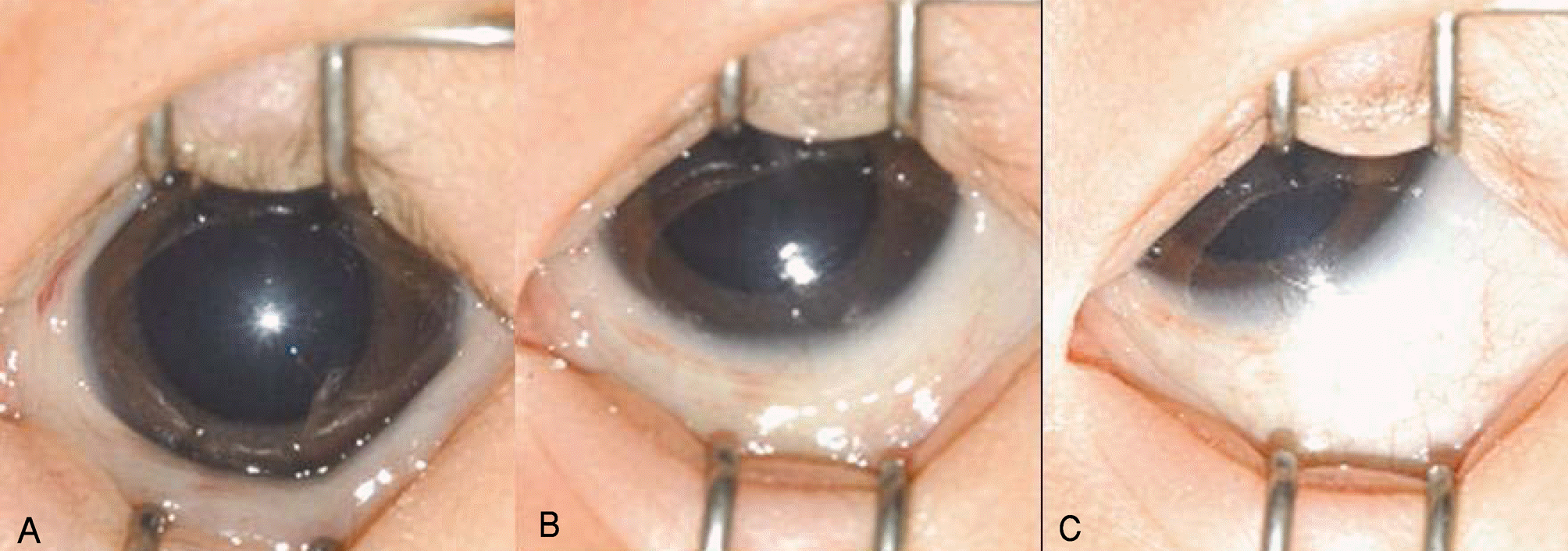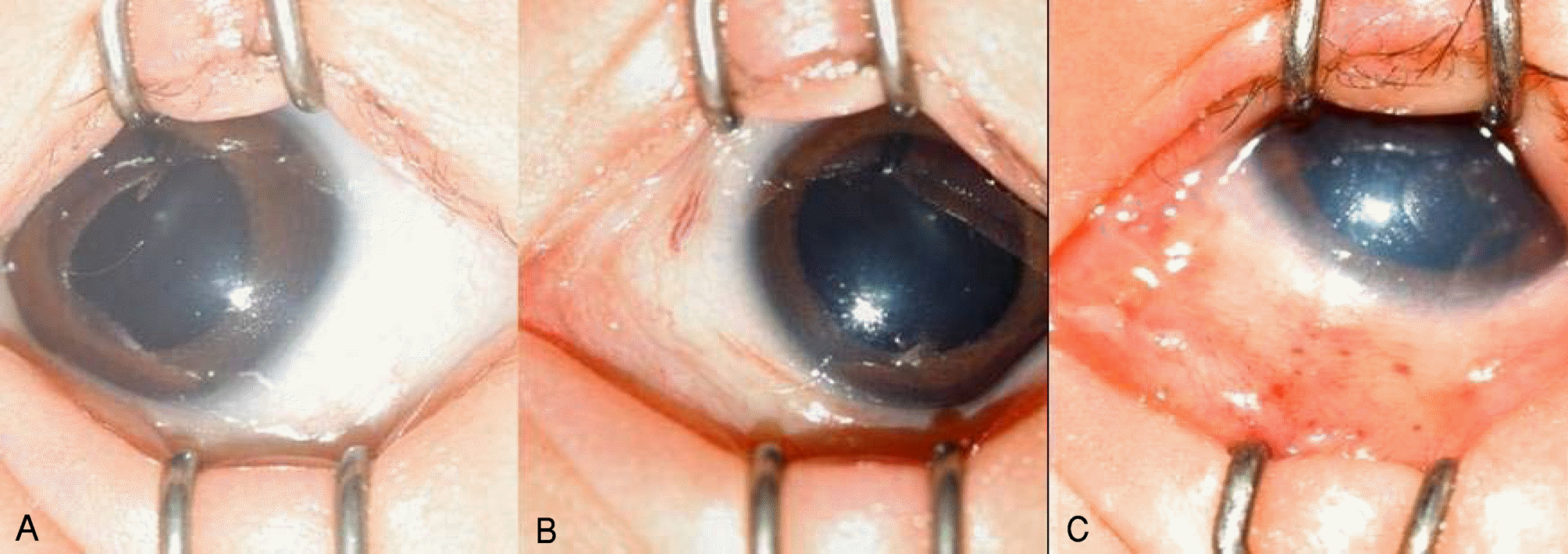Abstract
Purpose
Bell's phenomenon (BP) was known not to be common in premature babies. If manifested, it may be detected on screening examinations for retinopathy of prematurity (ROP), indicating that conjunctival injury may have occurred. We studied correlations with BP and conjunctival injuries.
Methods
Ninety-two eyes of 46 premature babies, ranging from 36 to 38 weeks of gestational age, underwent screening examination for ROP. Rotation of the eyeball was evaluated with an inserted speculum.
After observing temporal and nasal ora serrata with indentation, conjunctiva was examined for any possible damage.
References
1. Bell C. On the motions of the eye in illustration of the uses of the muscles and nerves of the orbit. Philos Trans R Soc Lond. 1823; 113:166–86.
2. Francis IC, Longhhead JA. Bell's phenomenon: A study of 508 patients. Aust J Ophthalmol. 1984; 12:15–21.
3. Ferrer JA. Conclusions from Bell's phenomenon variants. Trans Am Acad Ophthalmol Otolaryngol. 1973; 77:714–20.
4. Snir M, Kremer I, Kuperman A, et al. Bell's phenomenon in newborns and premature babies. Br J Ophthalmol. 1996; 80:553–5.

5. American Academy of Pediatrics. Section on Ophthalmology. Screening examination of premature infants for retinopathy of prematurity. Pedriatrics. 2001; 108:809–11.
6. Maheshwari R, Kumar H, Paul VK, et al. Incidence and risk factors of retinopathy of prematurity in a tertiary care newborn unit in New Delhi. Natl Med J India. 1996; 9:211–3.
7. Termote JUM, Schalij-Delfos NE, Wittebol-Post B, et al. Surfactant replacement therapy, a new risk factors in developing retinopathy of prematurity? Eng J Pediatr. 1994; 153:113–6.
8. Rekha S, Battue RR. Retinopathy of prematurity, Incidence and risk factors. Indian Pediatrics. 1996; 33:999–1003.
Figure 1.
Grading of Bell's phenomenon.: (A) grade 0, no response, (B) grade 1, minimal response or the corneal center is visible, (C) grade 2, full response or the corneal center is invisible.

Figure 2.
Grading of conjunctival injury.: (A) grade A, minimal injury. (B) grade B, conjunctival petechia. (C) conjunctival hemorrhage or laceration.

Table 1.
Baseline clinical characteristics of study patients
| Male:Female (eyes) | 48:44 |
| Birth weight (gm) | 1471.8 (643-2830) |
| Gestational age (wks) at birth | 31.0 (25-37) |
| Gestational age (wks) at exam | 36.7(36-38) |




 PDF
PDF ePub
ePub Citation
Citation Print
Print


 XML Download
XML Download